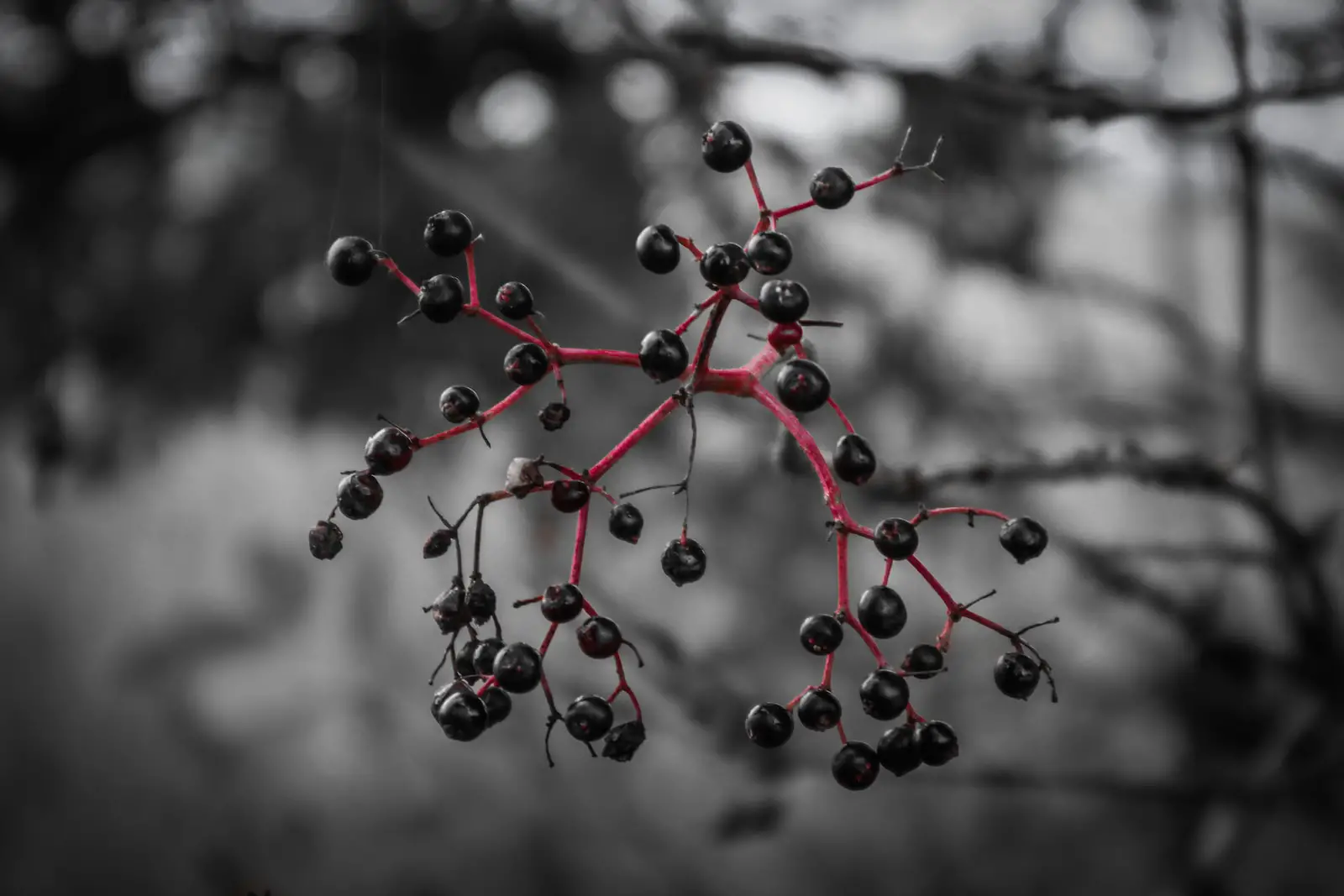Elderberry, a highly versatile and medicinal plant, has a rich history of cultural, culinary, and therapeutic uses. Known for its delicate, white or pink flowers and deep purple-black berries, Elderberry offers a visual charm to gardens, along with benefits for wildlife and humans alike. Native to various regions in the Northern Hemisphere, Elderberry has been cultivated for centuries as both a fruit crop and an ornamental plant.
Medicinally, Elderberry is a powerhouse, packed with vitamins and antioxidants. The berries have been used in traditional remedies to treat various ailments such as colds, flu, and inflammation. In culinary applications, Elderberry is celebrated for its unique flavor and is used in jams, jellies, syrups, and even wines.
Beyond its culinary and medicinal value, Elderberry plays a vital ecological role, providing habitat and nourishment for numerous bird and insect species. Its complex compound leaves, beautiful blossoms, and abundant fruiting make it an attractive addition to gardens seeking both aesthetics and functionality.
| Attribute | Details |
|---|---|
| Common Names | Elderberry |
| Botanical Name | Sambucus spp. |
| Family | Adoxaceae |
| Plant Type | Deciduous shrub or small tree |
| Mature Size | 5 to 30 feet tall, depending on species |
| Sun Exposure | Full sun to partial shade |
| Soil Type | Moist, well-draining soil |
| Hardiness Zones | 3-11 |
| Native Area | Northern Hemisphere |
Elderberry Care
Elderberry is a relatively easy plant to grow and care for. It is tolerant of a variety of environmental conditions, making it suitable for different landscapes. Planting Elderberry in a spot that receives adequate sunlight and has well-draining soil will encourage robust growth and abundant fruiting.
Watering needs for Elderberry are moderate. Regular watering during the initial growth stage and in times of drought will promote healthy development. It’s essential to maintain a balance, as both over-watering and under-watering can lead to issues such as root rot or stress.
Light Requirement for Elderberry
Elderberry thrives in full sun to partial shade. Providing at least 6 hours of sunlight per day will promote healthy growth and abundant flowering and fruiting. In regions with very hot summers, some afternoon shade may be beneficial.
Soil Requirements for Elderberry
Elderberry prefers moist, well-draining soil with a pH level of 5.5 to 6.5. While it can adapt to various soil types, incorporating organic matter like compost will improve soil fertility and enhance water retention.
Water Requirements for Elderberry
Regular watering is crucial for young Elderberry plants to establish their root systems. Once established, Elderberry is moderately drought-tolerant but will thrive with consistent moisture. Avoid waterlogging the soil, as this can lead to root rot.
Temperature and Humidity
Elderberry is adaptable to various climate zones but prefers temperate conditions. It can withstand cold winters and hot summers, provided adequate watering during dry periods. Humidity is generally not an issue for this resilient plant.
Fertilizer
Elderberry does not usually require heavy fertilization. Applying a balanced, slow-release fertilizer in early spring can enhance growth. Regular compost or mulching will also add essential nutrients to the soil.
Pruning Elderberry
Pruning is essential to maintain the shape and health of an Elderberry plant. Regular removal of dead or damaged branches and thinning out old stems encourages new growth and better fruit production.
Propagating Elderberry
Elderberry can be propagated through cuttings or suckers. Taking cuttings from healthy branches during the dormant season and planting them in a mixture of sand and peat can lead to successful propagation.
How To Grow Elderberry From Seed
Growing Elderberry from seed is a slow process and requires patience. Seeds should be stratified for about 30-60 days before planting. Sowing them in well-prepared soil with good sunlight exposure will help in germination.
Common Pests & Plant Diseases
Aphids
Aphids can be controlled through insecticidal soaps or encouraging natural predators.
Powdery Mildew
This can be mitigated with proper spacing and pruning to ensure good air circulation.
Common Problems With Elderberry
Poor Fruit Production
This could result from inadequate sunlight or poor pruning practices. Ensure full sun exposure and proper pruning techniques to boost fruiting.
Root Rot
Root rot may occur due to over-watering or waterlogged soil. Ensure proper soil drainage to prevent this issue.
Pro Tips
- Consider planting multiple Elderberry varieties to enhance pollination and fruit production.
- Regular monitoring for pests and diseases helps in early detection and control.
- Avoid consuming raw or unripe Elderberries, as they can be toxic.
- Utilize Elderberry’s ornamental value by incorporating it into hedgerows or as a focal point in the garden.
- Consult local guidelines and recommendations for selecting the best Elderberry species for your region.



